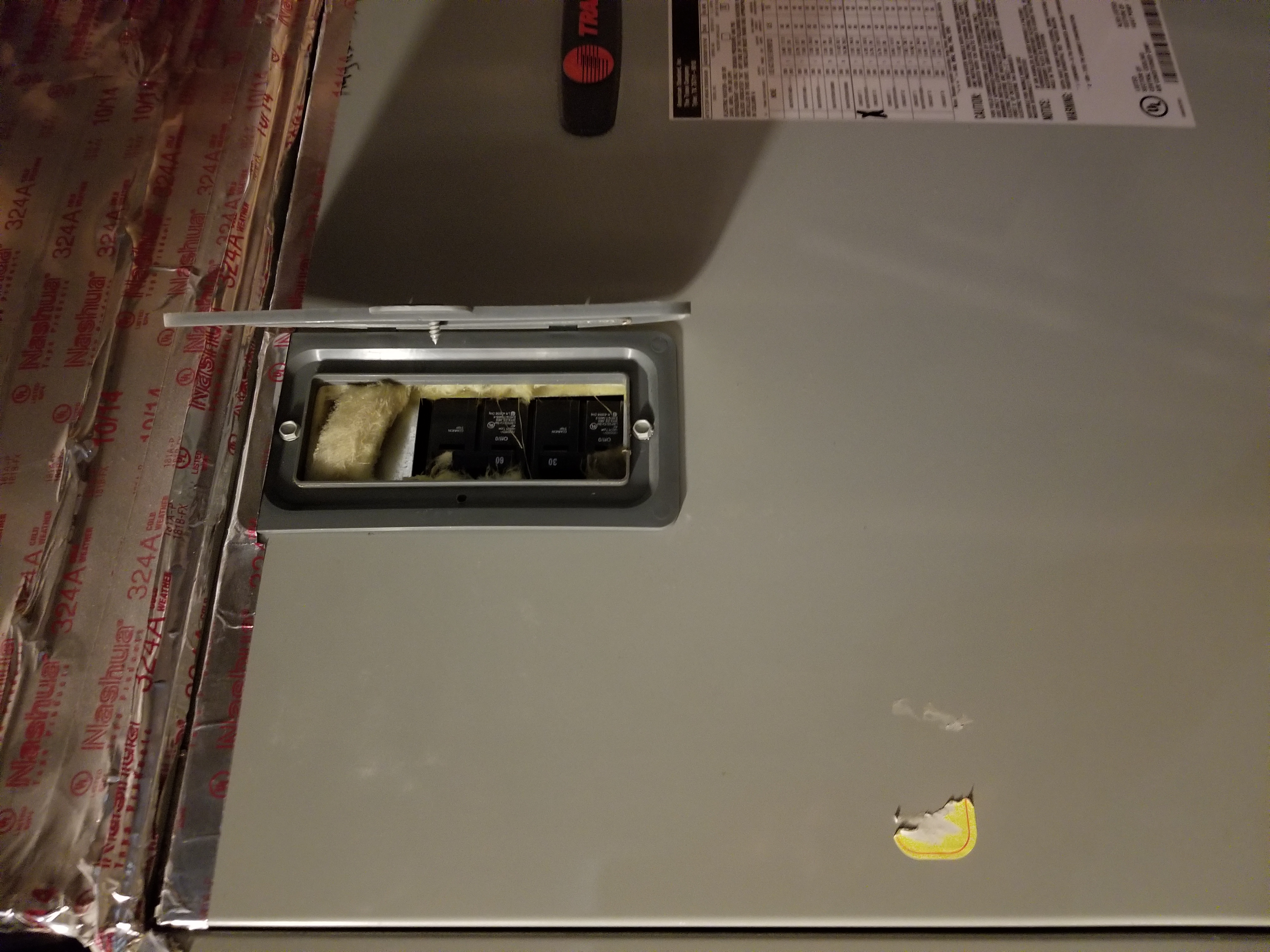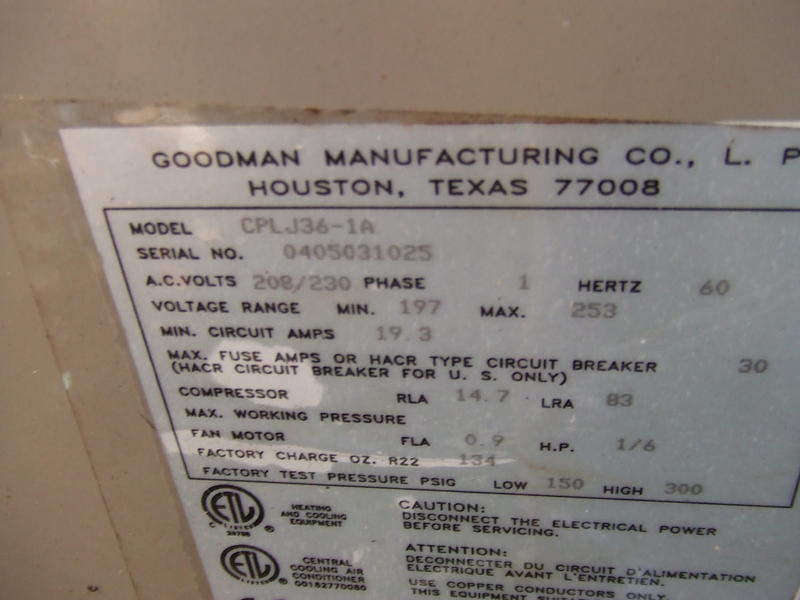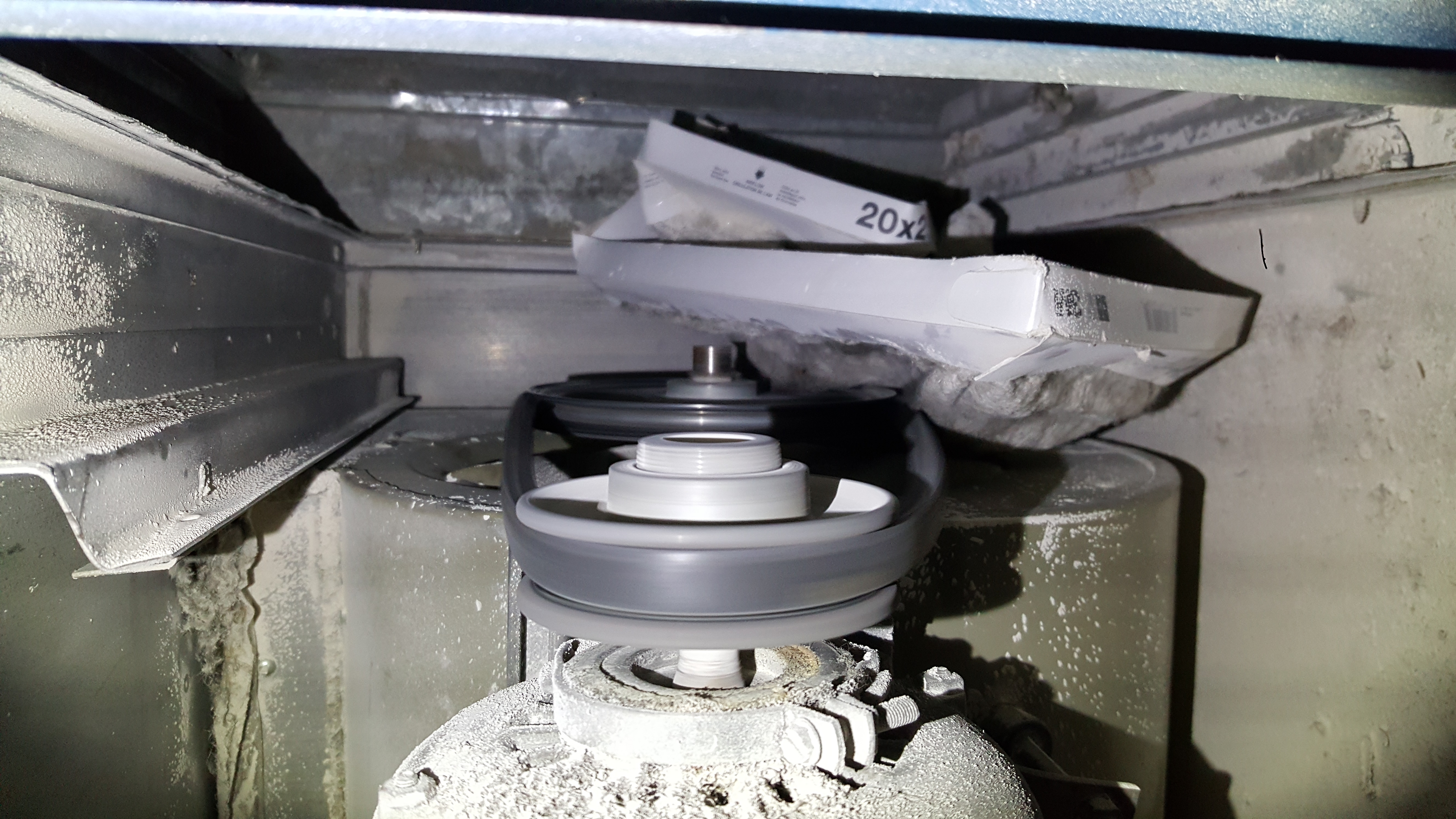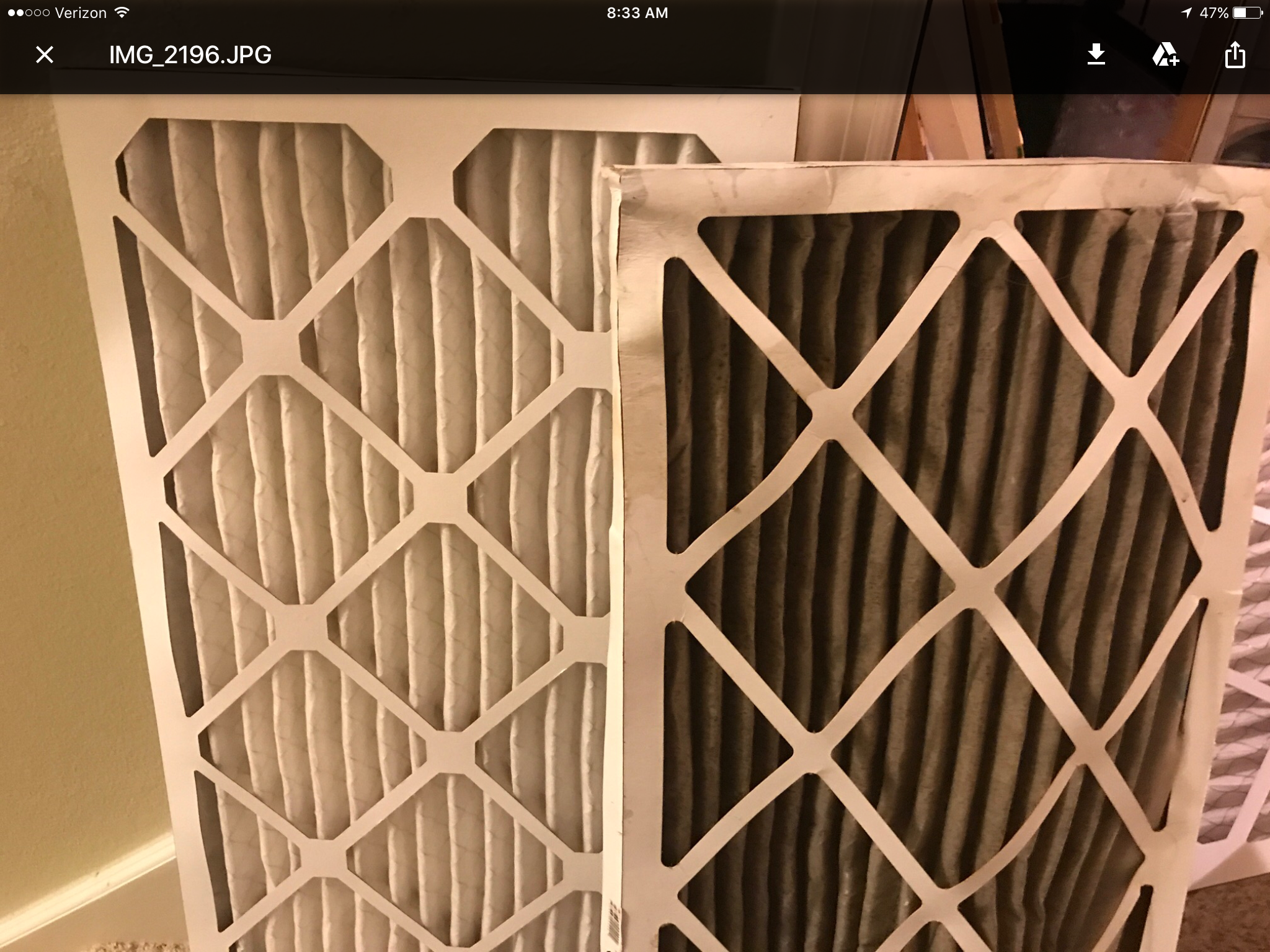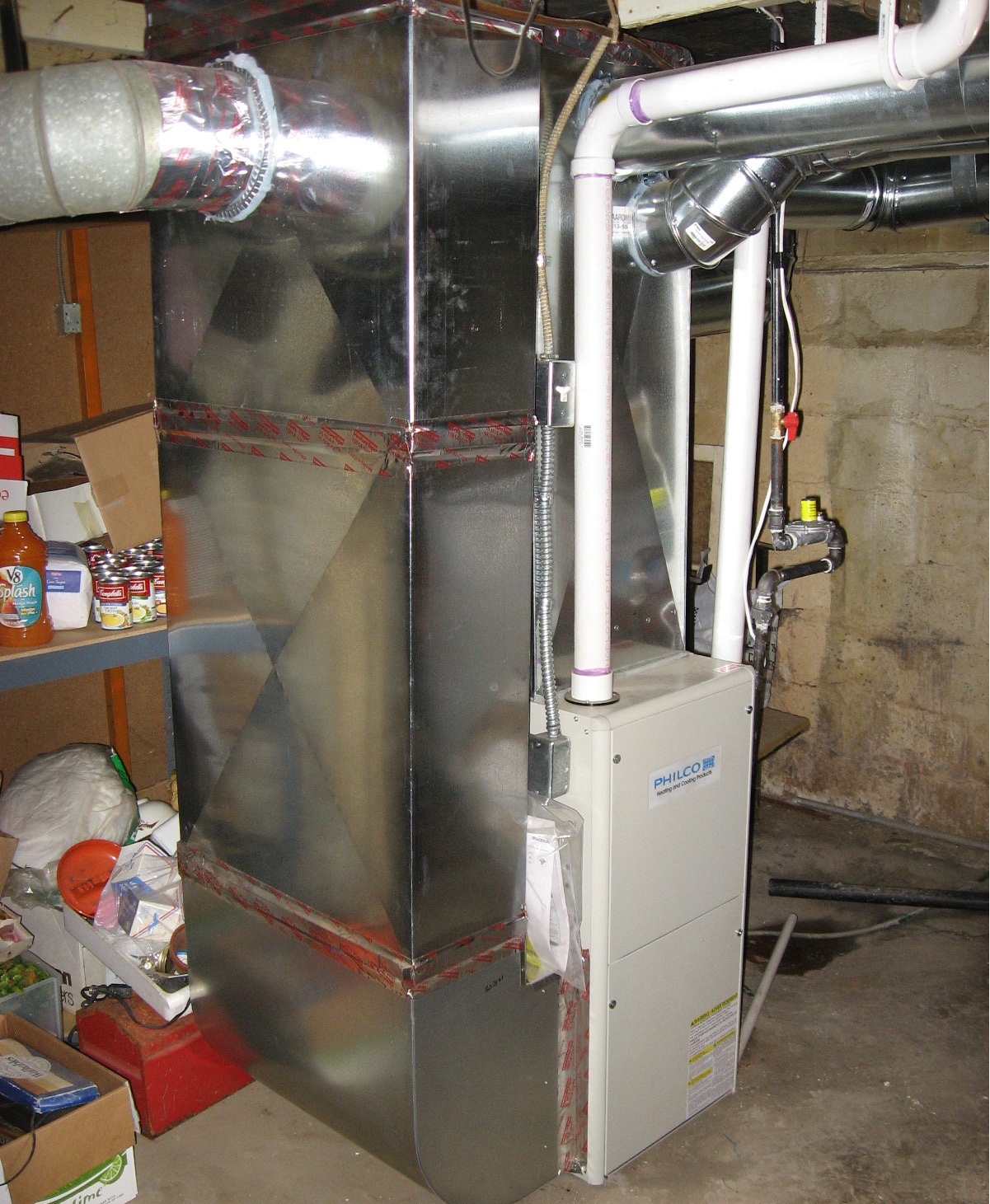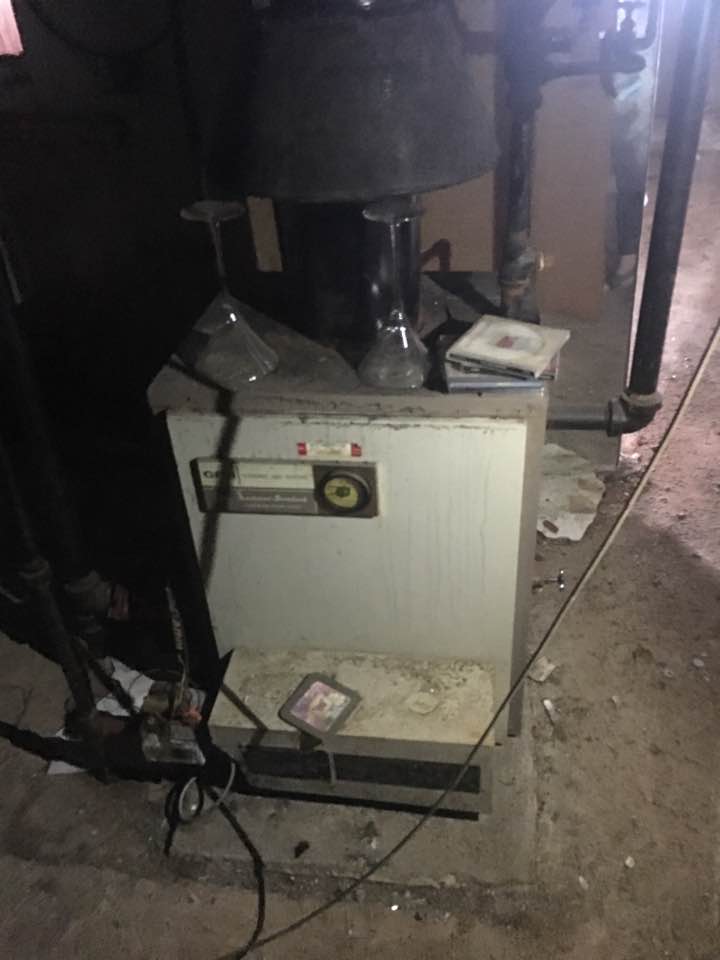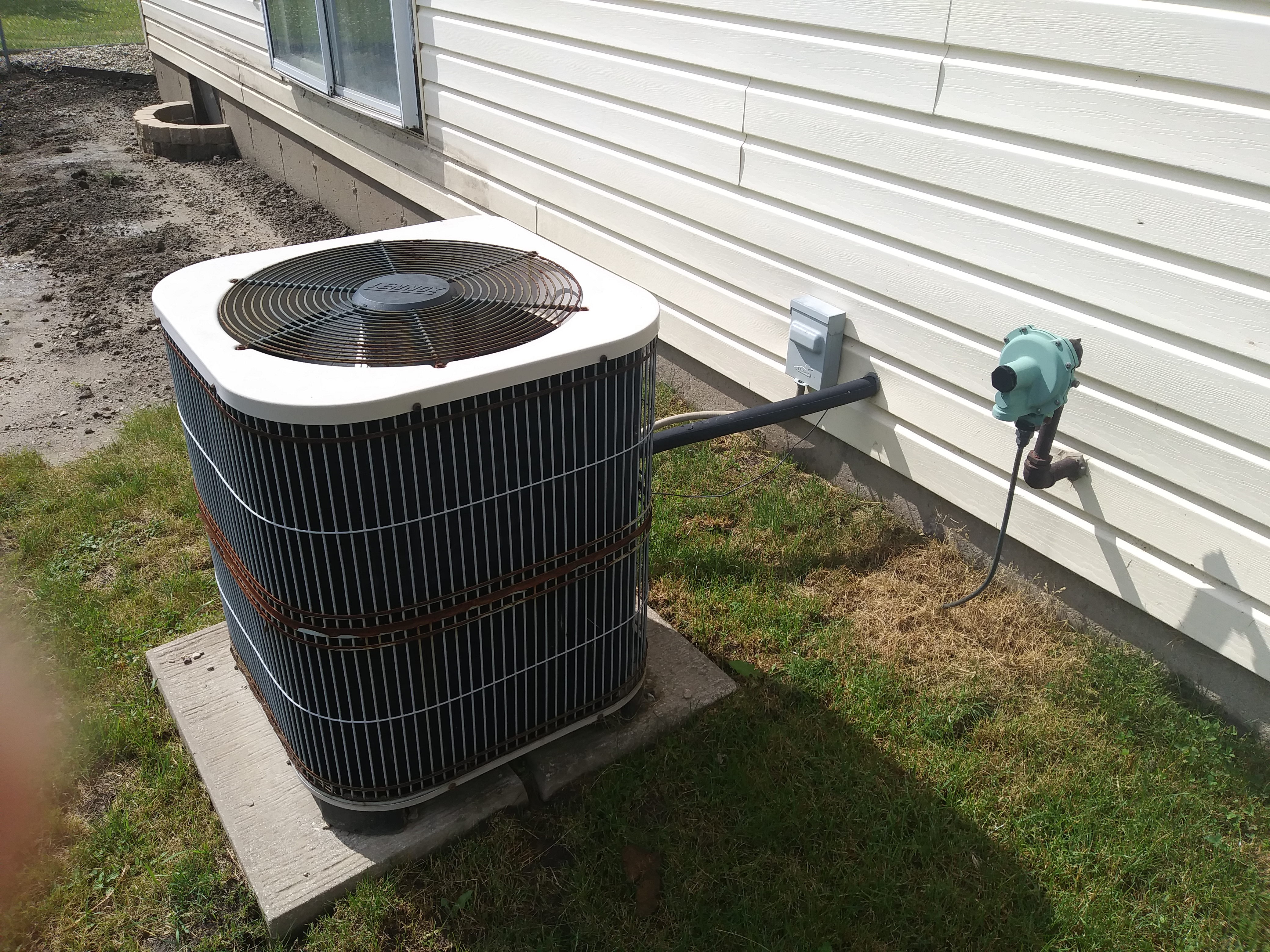I explained to the client that this is the location of the shut off for the air handler. I also took pictures and explained that the suction tube must be insulated the entire length to prevent condensation, the line was bare for about 10 feet.
Today I inspected an electric fired air handler. Upon removal of the filter the inspector noted it was dirty, inspector reported verbally and in writing the importance of keeping the air handlers filter clean. Recommended changing filters every 30-45 days
Logging in
The picture displayed shows frost accumulating on the coolant lines coming off the condenser unit. This has happened to me with an older unit in a rent house I was in that was not well maintained. This can occur in warm weather when the unit is in constant operation and the lines don’t have a chance to defrost during down time between cycles. Recommend unit being serviced by technician and make sure to check air filters inside.
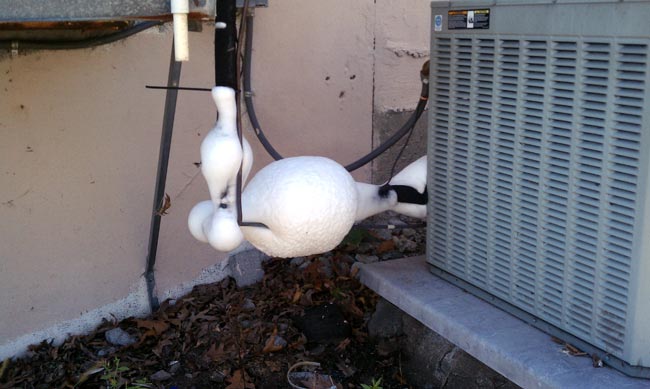
Inspecting the HVAC plenum and duct system for cracks and leaks should be performed where possible, where the ducting is visible. Check for cracks or gaps at joints and bends in the ducting. All seems should be sealed with manufacturer recorded sealing agent. Whether that be UL 181 foil tape for coil cabinets, duct tape, mesh and mastic, or approved sealing putty. Any gaps, even small ones can lead to energy loss and extra strain on the system.
This is the information label of a Goodman brand HVAC out side unit. The tonnage size of the unit is 3 tons based on the Model number. The manufacture date of the unit based on the serial number is 2004.
For taking ideal air samples for a mold inspection it is recommended that you take the samples three to six feet off the ground near the center of the room. Running the device for ten minutes is adequate but can be reduced to five minutes if air movement from indoor activities is a concern.
During an inspection of a home that had recently undergone renovations of the basement area the furnace inspection brought about a few raised eyebrows. The upper cabinet cover was off prior to us arriving and the inside was covered in drywall dust. Needless to say this could easily impair furnace function and cause flame issues.
The filter was crushed against the fan blow belt and had scorch marks. A recommendation of having it professional services and fully inspected by an HVAC professional lead to the furnace being replaced by the seller as it was not safe to operate in current condition.
During inspection of high efficiency natural gas furnaces the most common issue I see is rust inside the cabinet. This is not usually a large problem as the rusting area is nowhere near the heat exchanger but it is still damage to the cabinet. Often the water source is in the condensate line or the collection chamber where a leak occurs at the capped end. An easy fix for an HVAC professional and one of the reasons a yearly tuneup is a good idea for an gas fired appliance.
In this picture you have a dirty and clean air filter. Air filters should be checked every month and changed when air flow is compromised. Dirty air filters will cause the unit to run harder and will not be as effiecent. Electric supply should be turned off before any maintenance.
As a inspector you are there to observe and report. When it comes to HVAC systems you should describe what type of unit is being used and locate the shut off. You should report where the units are located along with the thermostats. Inspectors can activate the components but only under normal operating conditions.
0 0 0 0 0 0 0 0 0 0 0 0 0 0 0 0 0 0 0 0 0 0 0 0 0 0 0 0 0 0 0 0 0 0 0 0 0 0 0 0
For inspection the type of fuel used is Gas.
with a continuous burning pilot. The unit had not been serviced since 2004. The front cover of the unit was held in place by the CMU in front of it. The unit had no electric to it so there was no ability to operate the unit.
In the article on gravity furnaces it state the in efficiency of the unit. The possible hazardous materials used in the furnace such as asbestos. Most gravity furnaces were coal burning but many have been updates to use more modern fuels
The attached image is a condenser unit. It is installed on a concrete pad and has the appropriate electrical disconnect close to the unit that is required. The insulation around the refrigerant lines is cracking and needs to be placed. The unit does show signs of rust. While there are no issues with how the condenser operates, it was determined that the condenser unit is 23 years old.
The above picture is of a radial perimeter duct system. The difference between this and a perimeter loop duct system, is the loop system makes a loop/lap around the attic or basement that brings air in a circle around the building. The radial perimeter uses a centralized system that allows that duct-work to extend towards the perimeter of the building, and it releases conditioned air along the way.
For this research assignment, I went to the gallery and found a picture and graph that describes the placement and perimeters in which an AC system can be placed. The outdoor unit has to be three inches off the ground, a minimum of 30 inches away from the building, 48 inches before the buildings roof, and a minimum of 10 inches from any other surrounding objects.
These are two Trane air conditioning units for a single home controlling two zones the are both three ton units the main unit has larger coils they run off two separate furnaces they are clean no rust they are both level the slab is in good shape no cracks the electric shutoff for both units are right behind the units.
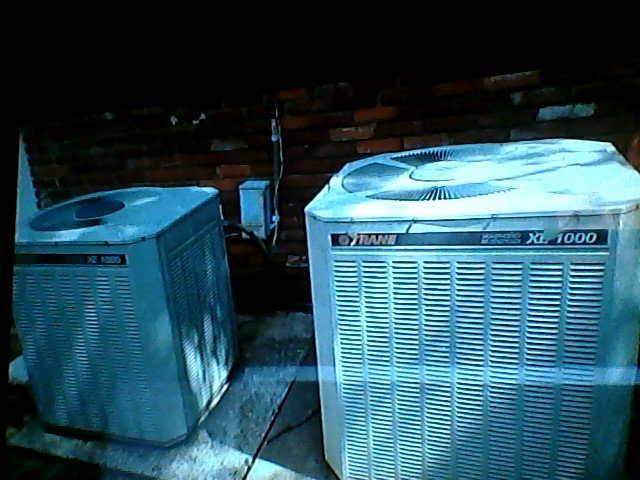
I chose to study the article “Estimating the Lifespan of a Water Heater.” As a general rule a typical water heater has a life expectancy of around 10 years. Some factors that contribute to this are the quality of the unit that is installed, if the water heater was installed correctly and if regular maintenance of the unit was kept up, such as flushing the water system. However the biggest factor that contributes to the lifespan of a water heater is the usage. A home that uses lots of water means that the water heater will have to work hard to heat that water.
